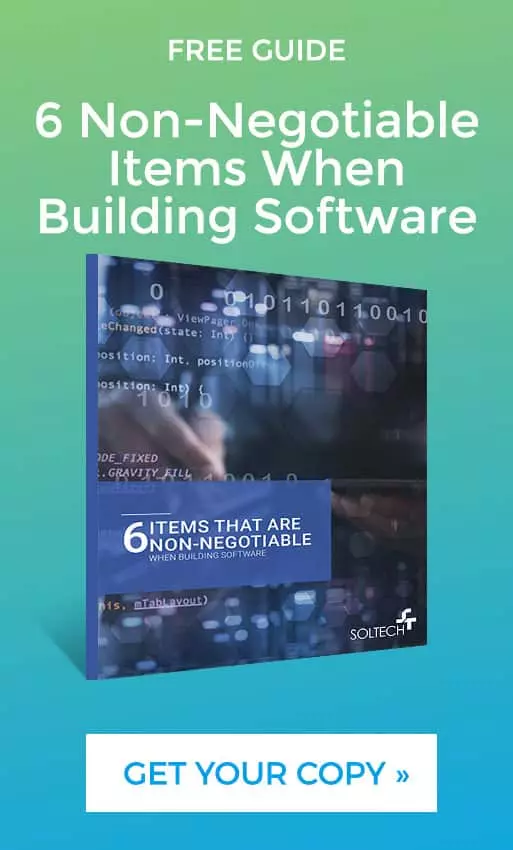
Avoidable Mistakes Made When Building a Minimum Viable Product
By SOLTECH
When you’re looking to get your idea from paper to a tangible, profitable piece of software, developing an MVP is a great place to start. With an MVP, you’re able to see your ideas come to life, adjust them accordingly, and move on from there.
A good minimum viable product should open the door for further business development and creativity, paving the way for a useful final software product.
Over the years, we’ve seen client blunders when creating an MVP. To help you avoid an MVP pitfall, here are commonly made mistakes when creating a minimum viable product.
Common MVP Development Mistakes
Expecting a Finished Product
This is by far the most common mistake product owners make when creating an MVP. The purpose of an MVP is not to create a hearty software application, but to build a bare-bones version that contains the most vital components of the product to test the effectiveness and reevaluate, if needed.
Aside from unrealistic expectations, this also plays into the idea that a product owner knows their users well enough to create an entire software product without consulting the end users as the project progresses.
Afraid to Reveal an Unfinished Product
It’s understandable that, if a business owner is investing a significant amount of time and money into creating new software, they are thinking about the end users. So, it is sometimes difficult for those same people to reveal the MVP to users because of its dull appearance and lack of functionality. But, this step is important. Like we’ve said, the point of the MVP is to be certain that the problems you think you have are the same problems your users have. Including users in MVP testing is tantamount to the success of the software.
Thinking Too Big, Too Soon
If everything goes according to plan, thousands of people will use your new software every day, and looking ahead to what that will look like is important. But, don’t give into the temptation to build your MVP to such a large scale.
Go ahead and build an MVP that doesn’t scale and direct your focus to learning about your users, what they want, and how high the demand for your product will be.
Avoid Making the Same Mistakes
Before developing your minimum viable product, ask yourself what feature or idea that, if left out, would prevent your software application from being successful? When you can point to the primary concept of your software, then create an MVP to test it out. This way, you can discover which ideas are worth pursuing further and which should be left on the table.
If you have a great software idea and want to see them come to life, let us know. We’ve worked with executives and business owners of companies of all sizes to create successful, profitable software that fits their needs and the needs of their users.





